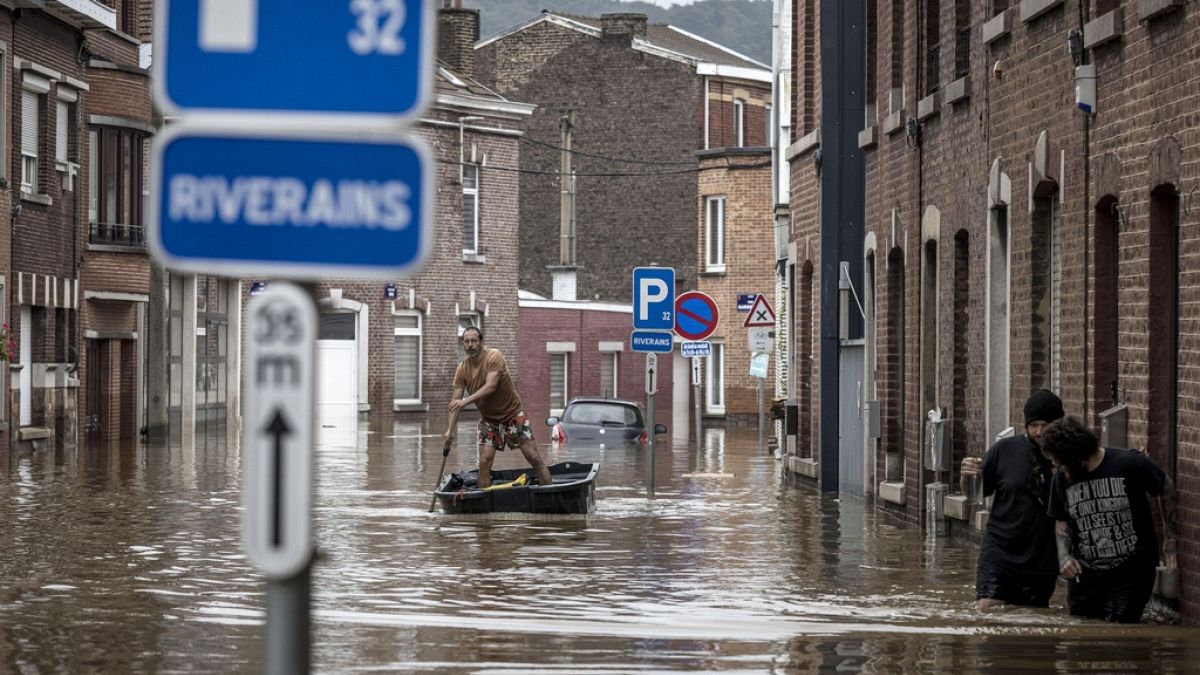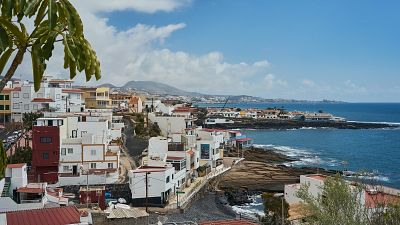The situation is already critical as climate change leads to increasingly frequent and severe flooding, drought and rising sea levels. Without urgent action by governments and EU leaders the impact is likely to become 'catastrophic' over the coming years, the European Environment Agency warns.
With temperatures rising in Europe at double the global average, policy makers' failure to keep pace with increasing extremes of weather could soon have “catastrophic” consequences, the European Environment Agency (EEA) warns in a disturbing new report as the EU executive prepares to unveil a climate resilience plan.
In its first detailed climate risk assessment, published today (11 March), the Copenhagen-based EU agency has taken a detailed look at the frequency and intensity of drought, heatwaves and other weather phenomena and concluded there is a clear and present threat to life, livelihoods and the wider economy.
“Extreme heat, once relatively rare, is becoming more frequent while precipitation patterns are changing. Downpours and other precipitation extremes are increasing in severity, and recent years have seen catastrophic floods in various regions,” the EEA warns in its report.
Blaz Kurnik, who heads the agency’s work on climate change impacts and adaptation, said the climate was now changing so quickly, and the associated risks could increase further, particularly in the more dramatic warming scenarios modelled in the report.
“The risk is simply outpacing the development of policy,” Kurnik told reporters in a briefing ahead of publication.
EEA executive director Leena Ylä-Mononen recalled that 2023 was “by a huge margin” the warmest year since records began and probably over the last 100,000 years. Last month the global average temperature breached the Paris Agreement threshold of 1.5 degrees above pre-industrial levels.
In fact, the report notes, record-breaking global temperatures have been recorded every month since June 2023. “So this is the new normal, and it should also be the wake-up call – the final wake-up call,” Ylä-Mononen said.
The 425-page report delves into the impact of rising average temperatures on water security, food production, health, energy demand, marine and coastal ecosystems, and urban areas. It identifies key present and future impacts, from large scale flooding as seen across the EU in recent years to prolonged drought, with that currently affecting Spain reflecting the particular threat faced by southern Europe.
It comes on the eve of the European Commission’s planned publication of a ‘climate resilience’ plan, intended to outline potential policy responses to climate breakdown. Among areas where action is needed, the EEA mentions building up disaster preparedness for floods and wildfires, and the shoring up of coastal defences as sea levels rise.
The EEA identifies coastal and marine ecosystems and forests, especially in the south, as the areas where the most urgent action is needed, with risk severity already critical and likely to increase to “catastrophic” towards the end of the century.
More attention and further investigation is also needed into the impact of climate change on natural carbon sinks, changes in the distribution of wildlife and invasive species. “Southern Europe is now warm enough for mosquitoes to transmit formerly tropical diseases, including dengue and chikungunya, and several outbreaks have occurred in recent years,” the authors note.
All the ongoing impacts and future risks have direct economic impacts, the report highlights, not least in the property market and insurance sector. Since 1980, EU countries have suffered a cumulative €650bn in losses due to extreme weather, only a fifth of which was insured.
Kurnik said this is likely an underestimate. “If we don’t increase our action on mitigation and adaptation, this could lead towards the end of century towards €1tn annually,” he warned.
Moreover, the time for trying to head-off climate change through emissions reduction and other mitigation efforts appears to be over, although still essential to avoid dramatically worsening an already critical situation. “Overall the priorities are pretty insensitive to the assumption of warming scenarios, because climate change for the next few decades is largely determined by past emissions,” said Hans-Martin Füssel, an EEA specialist on climate change adaptation.
Ylä-Mononen said “there should be no surprises for the Commission” in the report, as the environment watchdog had been working closely with EU officials as the executive finalises the climate resilience plan slated for publication on Tuesday (12 March).
The crisis deserves to be “among the top priorities” of the next crop of EU policy makers, due to take office after elections in June, the EEA director said. “I hope we make the case clear that this requires urgent attention and action – not only at the European level, but also from the member states and at the regional and community level,” she said. “The insurance and financial sectors should also be taking a serious look at our report,” she added.



